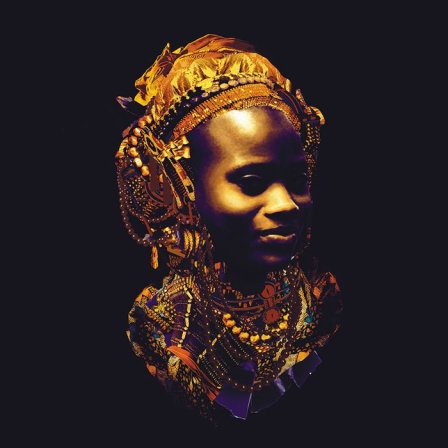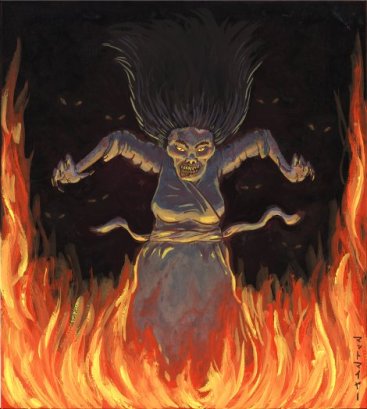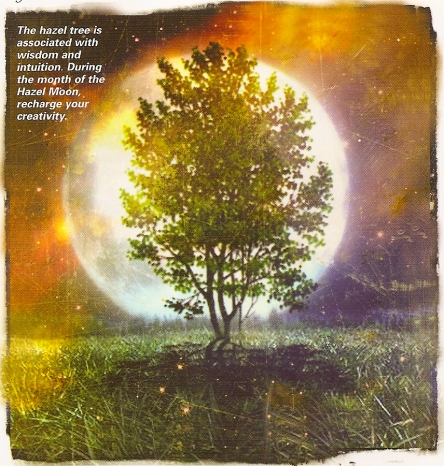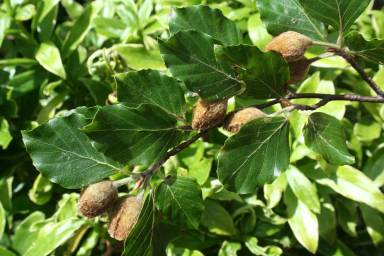
“Egyptian Girl with Snakes” by Frances Bramley Warren
“Nisaba’s themes are creativity, communication, excellence, inspiration, Universal Law, divination and dreams. Her symbols are pens, computers, books and snakes (Her sacred animal). In Sumerian tradition, this Goddess’s name means ‘She who teaches the decrees’, referring specifically to imparting divine laws to humankind. In order to communicate these matters effectively, Nisaba invented literacy, and She uses creative energy to inspire scribes. Besides this, Nisaba is an oracular Goddess, well gifted in dream interpretation.
Since 1928, this day, Author’s Day, has been observed as a time to honor authors who have contributed to American literature and encourage new writers in their talents. If you’re an aspiring author, today’s definitely the time to submit a poem, article, or manuscript, invoking Nissaba’s on it before sending it out. Also, take a moment to ask Nisaba to empower all your pens, pencils, resource books, computer, and so on, so that all your future writing efforts will be more successful and fulfilling.
For those who don’t consider authorship a forte, you can ask Nisaba to give you a symbolic dream instead.
Put a marigold, rose, or onion peel under your pillow to help with this, and keep a dream journal or tape recorder handy. Immediately upon waking, record any dream you recall. Then go to a favored dream guide, and whisper the Goddess’s name before looking up interpretations.”
(Patricia Telesco, “365 Goddess: a daily guide to the magic and inspiration of the goddess”.)

Patricia Monaghan writes: “‘She who teaches the decress’ of divinity to humans, this Goddess brought literacy and astrology to a Sumerian king on a tablet inscribed with the names of the beneficent stars. An architect as well, She drew up temple plans for Her people; She was also an oracle and dream interpreter. The most learned of deities, this snake Goddess also controlled the fertility of Her people’s fields” (p. 231).
 Nisaba’s “sanctuaries were E-zagin at Eresh and at Umma. On a depiction found in Lagash, She appears with flowing hair, crowned with horned tiara bearing supporting ears of corn and a crescent moon. Her dense hair is evoked in comparison in the description of similarly hairy Enkidu in the Gilgamesh epic.
Nisaba’s “sanctuaries were E-zagin at Eresh and at Umma. On a depiction found in Lagash, She appears with flowing hair, crowned with horned tiara bearing supporting ears of corn and a crescent moon. Her dense hair is evoked in comparison in the description of similarly hairy Enkidu in the Gilgamesh epic.
As with many Sumerian deities, Nisaba’s exact place in the pantheon and Her heritage appears somewhat ambiguous. She is the daughter of An and Urash. From Sumerian texts, the language used to describe Urash is very similar to the language used to describe Ninhursag. Therefore, the two Goddess may be one and the same. Nisaba is the sister of Ninsun, the mother of Gilgamesh. If Urash and Ninhursag are the same Goddess, then Nisaba is also the half sister of Nanshe and (in some versions) Ninurta.
In some other tales, She is considered the mother of Ninlil, and by extension, the mother-in-law of Enlil.
The god of wisdom, Enki, organized the world after creation and gave each deity a role in the world order. Nisaba was named the scribe of the gods, and Enki then built Her a school of learning so that She could better serve those in need. She keeps records, chronicles events, and performs various other bookwork related duties for the gods. She is also in charge of marking regional borders.
She is the chief scribe of Nanshe. On the first day of the new year, She and Nanshe work together to settle disputes between mortals and give aid to those in need. Nisaba keeps record of the visitors seeking aid and then arranges them into a line to stand before Nanshe, who will then judge them. Nisaba is also seen as a caretaker for Ninhursag’s temple at Kesh, where She gives commands and keeps temple records.
The Goddess of writing and teaching, She was often praised by Sumerian scribes. Many clay-tablets end with the phrase “Nisaba be praised” to honor the Goddess. She is considered the teacher of both mortal scribes and other divine deities. In the Babylonian period, She was replaced by the god Nabu, who took over Her functions. In some instances, Nisaba was his instructor or wife before he replaced Her.

As the Goddess of knowledge, She is related to many other facets of intellectual study and other gods may turn to Her for advice or aid. Some of these traits are shared with Her sister Ninsina. She is also associate with grain, reflecting Her association with an earth Goddess mother.” [1]
Also seen as Nissaba, Nidaba, Nanibgal, and Nunbarshegunu (lady whose body is dappled barley).
Sources:
Monaghan, Patricia. The New Book of Goddesses and Heroines, “Nisaba”.
Sabrina. Goddess A Day, “Nisaba“.
Wikipedia, “Nidaba“.
Suggested Links:
Agaliha. Mysticwicks.com, “Thread: Nisaba {Goddess of the Week}“.
Artesia. Goddessschool.com, “Nisaba: Sumerian Wise Woman and Mother Goddess“.
Black, Jeremy & Anthony Green. Gods, Demons and Symbols of Ancient Mesopotamia: An Illustrated Dictionary, “Nisaba“.
Etcsl.orinst.ox.ac.uk, “A Hymn to Nisaba (Nisaba A): translation“.
Gatewaystobabylon.com, “Nabu“.
Lambert, Wilfred G. Babylonian Wisdom Literature, “Nisaba and Wheat“.
Monaghan, Patricia. Goddesses in World Culture, Volume 1, “Nisaba of Eresh: Goddess of Grain, Goddess of Writing“.
Robson, Eleanor. Mathematics in Ancient Iraq: A Social History.
Sitarik, Jessica. Crystalvaults.com, “Nisaba: Sumerian Knowledge Goddess“.
Stuckey, Johanna. Matrifocus.com, “Ancient Grain Goddesses of the Eastern Mediterranean“.
Tudeau, Johanna. Oracc.museum.upenn.edu, “Nidaba (goddess)“.

















































